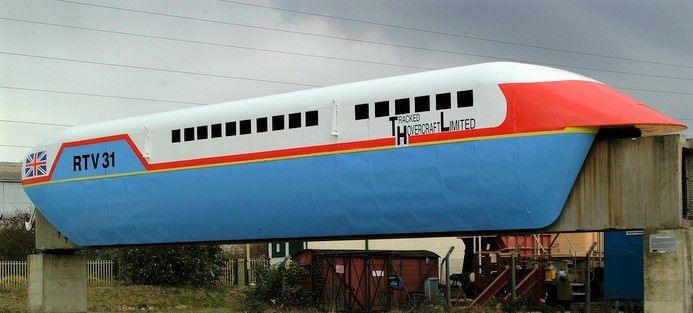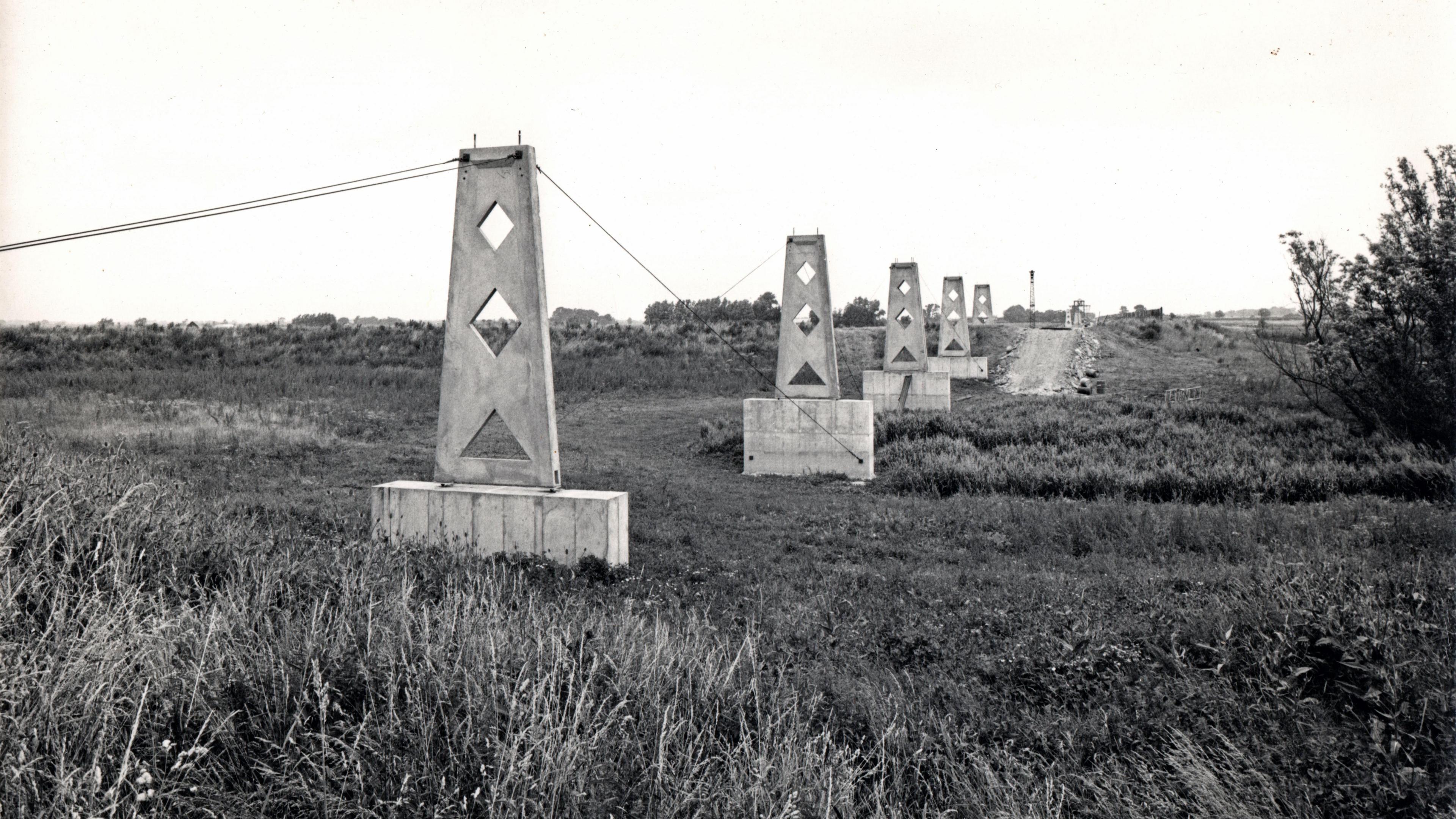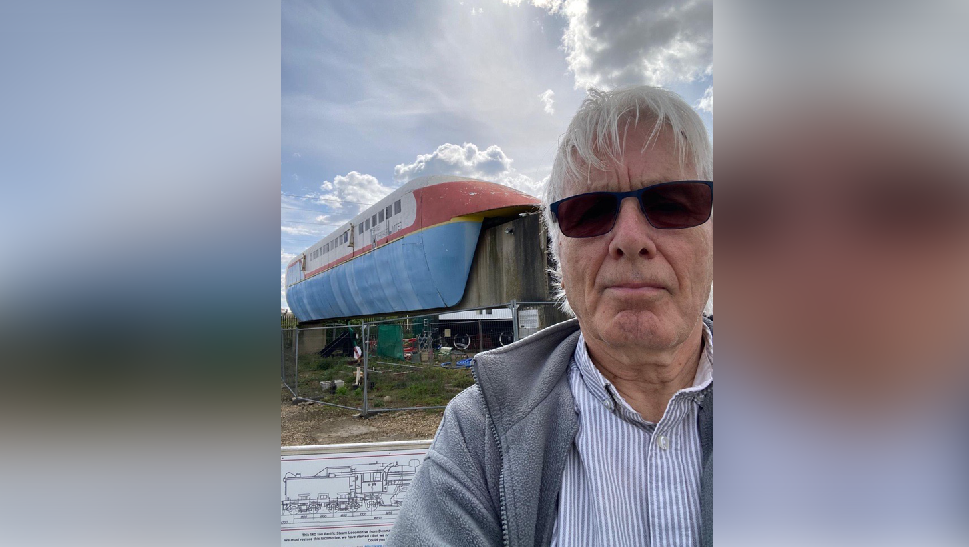Documentary to reveal unseen 'hover train' footage

Drew Silver says the vision of the hover train story was "Edinburgh to London in 90 minutes with the most environmentally friendly transport you can imagine"
- Published
A new documentary film will feature previously unseen footage of the testing of an ill-fated prototype "hover train".
Filmmaker Drew Silver, from Littleport in Cambridgeshire, said he became enthralled with the story of the "space age" RTV 31, which was trialled in the Fens in the late 1960s.
The "hover train" was a pipe dream poised to revolutionise public transport - but was abandoned when the government pulled the plug in 1973. Only a few original concrete pillars can still be seen between Sutton Gault and Earith.
"I thought it was an urban myth that parts of this train track still exist. When I found them I felt I was standing in the presence of unique history," Mr Silver said.

Brian Pearce said the late 1960s "brought us Concorde, a moon landing and the possibility of a 300mph guided land transport system"
Mr Silver, who runs a film company called Fenland on Film, external, said the track first appeared in 1969, set up by Tracked Hovercraft Limited, a government-backed private company.
It used a linear motor principle, external designed to propel a train at speeds of 300mph along a concrete monorail.
"There was more track at nearby Earith that was eventually going to join the section at Sutton Gault but it never made it," he said.
"In 1973, the government axed the project after not being overly impressed with the progress being made, and withdrew their backing."
Brian Pearce, chair of trustees at the Railworld Wildlife Haven, external in Peterborough, where the prototype is now on display, said the idea "combined two British innovations - the hovercraft and linear induction motor - with the goal of speeding up slow rail travel of the time".

The tracks were set up as part of a huge trial in the late 60s and early 70s at Sutton Gault and Earith in rural Cambridgeshire
Mr Silver grew up in the 1990s and cites a revival in Gerry Anderson TV shows for the inspiration to investigate the hover train story locally.
"I loved Thunderbirds, Stingray, all those futuristic 60s views of high-speed transport and space age vehicles, and the hover train was definitely reminiscent of that and it stuck with me," he said.
He said that when he first discovered that the hover train had been tested in the fens, "he could not quite believe it".

A public information board is still in place at the Sutton Gault site. Mr Pearce said the area was chosen because it was "so straight and flat"
Mr Silver said engineers from Cambridgeshire developed the technology alongside Prof Eric Laithwaite in their bid to see the dream of high-speed land travel become a reality.
"Tracked Hovercraft Ltd had the foresight to document testing of the full-size prototype between Earith and Sutton on 35mm film," he said.
He has collected about "four hours of beautiful 35mm film" that he believes has never been seen before, as well as hundreds of photographs, first hand testimonies and interviews with people who worked on the trials.
He said a promo trail for his documentary would be released on 12 May and could be accessed via Fenland on Film, external.

Mr Silver said many people were unaware what the concrete structures left behind in the Fens were, believing them to be "part of a bridge"
Mr Pearce explained that the plan eventually was to "run the hover train to the Thames Estuary Airport - which was an ultimately abandoned plan for a third airport in London".
He said a few test runs were conducted only at Earith, one of which in 1973 produced a speed of more than 100mph.

Brian Pearce, of Railworld Wildlife Haven in Peterborough, said the hover train combined two British innovations of transport
Get in touch
Do you have a story suggestion for Cambridgeshire?
Follow Cambridgeshire news on BBC Sounds, Facebook, external, Instagram, external and X, external.
- Published17 September 2017

- Published23 February 2017
